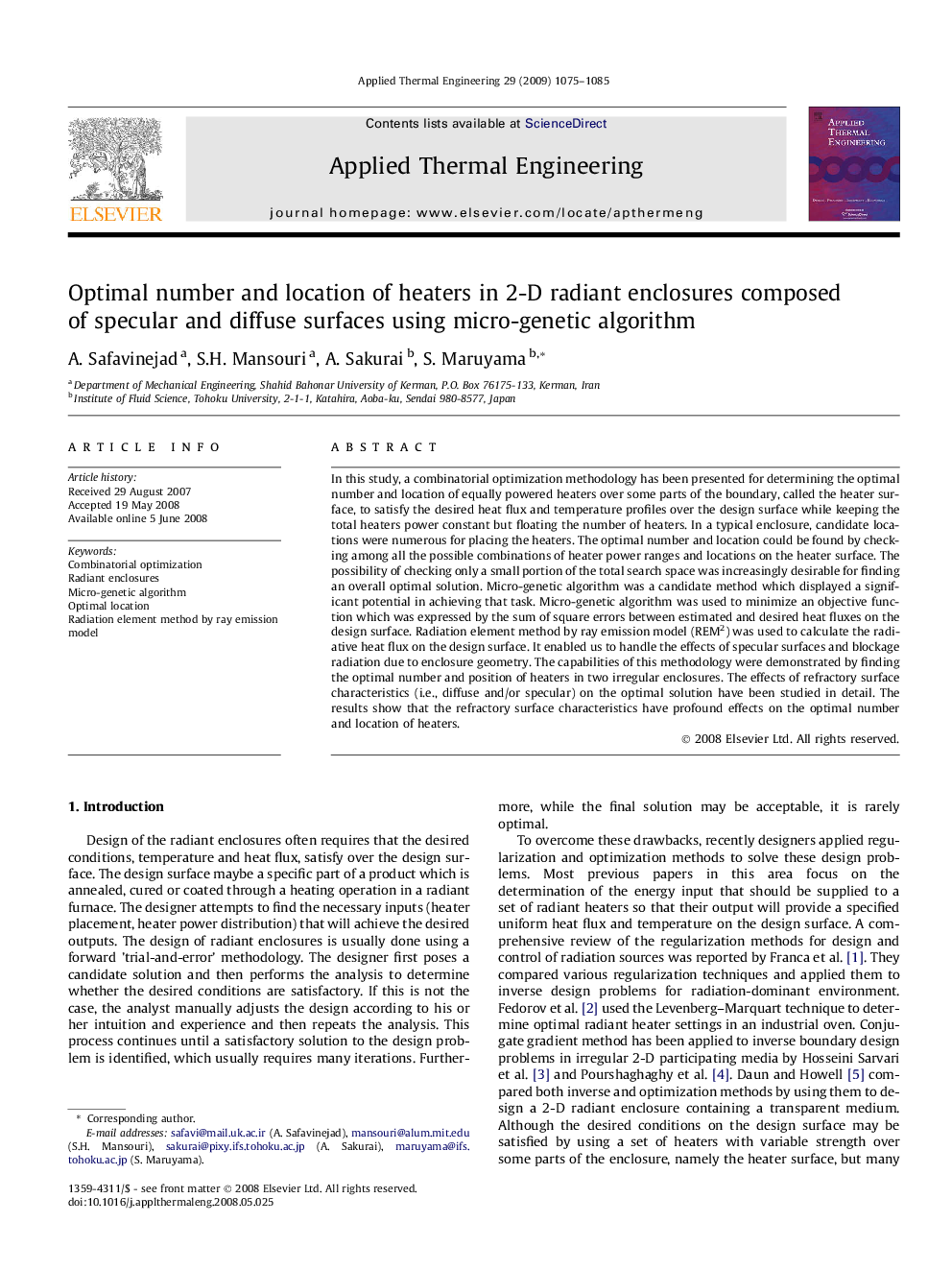| Article ID | Journal | Published Year | Pages | File Type |
|---|---|---|---|---|
| 648955 | Applied Thermal Engineering | 2009 | 11 Pages |
In this study, a combinatorial optimization methodology has been presented for determining the optimal number and location of equally powered heaters over some parts of the boundary, called the heater surface, to satisfy the desired heat flux and temperature profiles over the design surface while keeping the total heaters power constant but floating the number of heaters. In a typical enclosure, candidate locations were numerous for placing the heaters. The optimal number and location could be found by checking among all the possible combinations of heater power ranges and locations on the heater surface. The possibility of checking only a small portion of the total search space was increasingly desirable for finding an overall optimal solution. Micro-genetic algorithm was a candidate method which displayed a significant potential in achieving that task. Micro-genetic algorithm was used to minimize an objective function which was expressed by the sum of square errors between estimated and desired heat fluxes on the design surface. Radiation element method by ray emission model (REM2) was used to calculate the radiative heat flux on the design surface. It enabled us to handle the effects of specular surfaces and blockage radiation due to enclosure geometry. The capabilities of this methodology were demonstrated by finding the optimal number and position of heaters in two irregular enclosures. The effects of refractory surface characteristics (i.e., diffuse and/or specular) on the optimal solution have been studied in detail. The results show that the refractory surface characteristics have profound effects on the optimal number and location of heaters.
